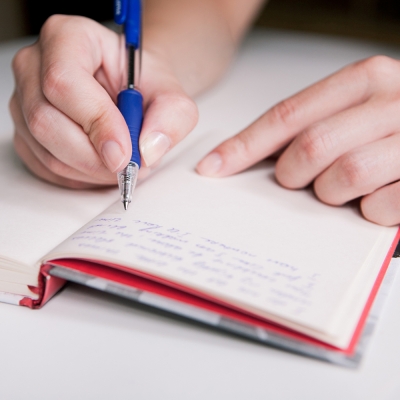
Writing corner
Creating your own writing space motivates you to write regularly. Preferably, keep your writing space away from the place where you do your school work. It could be an entire room or just a cozy nook close to the window. Decorate it with quotes from your favourite authors and books. Keep some snacks to munch on. Did you know Roald Dahl wrote from a hut in his garden?
Look around you for inspiration
The key to good writing is choosing an interesting subject. You can look around you for inspiration – your home, neighbourhood, family and the people you meet. According to author Jeffrey Archer, it is better to write what you know and have experienced. Once you stumble upon an idea, ask yourself would you pick up a book on this topic or story in a book store? If you don’t find the subject exciting, your readers won’t either.
Expand your vocabulary
Avoiding cliches and overused words can help enhance your writing. But that’s only possible if you have a rich vocabulary. And the only way you can build your vocabulary is by cultivating a reading habit. Reading more will not only introduce you to new and wonderful words but also teach you about different writing styles and hone your grammar.
Catchy intro
When writing an essay or a story, the intro or opening sentence is the most important. It is what will hook the reader to your piece. So make sure it is catchy and creative. The intro should kindle readers curiosity and make them want to read more.
Literary devices
Literary devices can help elevate a story. They are used by writers to convey deeper meanings about the plot, the characters and the theme. There are at least 22 literary devices in the English language-alliteration, personification, satire, symbolism and oxymoron to name a few. Author Khaled Hosseini’s “The Kite Runner” is a classic example of the literary device known as foreshadowing: while J.K. Rowling uses the narrative device of a backstory perfectly in her “Harry Potter” books. Next time you read these books, pay special attention to these devices and see how they are used.
Keep it smart
The one cliché that you must follow in your creative writing is to keep your work short and simple. Avoid adverbs and long paragraphs. Writing long sentences might make you feel like an accomplished writer, but they can be difficult to read. Your sentences and paragraphs should not sound contrived.
The art of description
Visualise the scene and characters in your head and then translate that into words. Write in such a manner that your reader too can picture the characters clearly in their mind. The best way to do this is to be descriptive and be specific. For example, if the character is taking a walk in the park, write about the types of trees around her, the colour of the leaves, the breeze, the sound her shoes make on the pavement, etc. These details will transport the reader into the character’s world and enhance their reading experience.
Plan, revise and reread
Once you have decided on your subject, you can move on to sketching the plot and characters. Planning is everything. Did you know J.K. Rowling spent five years planning and developing the plot of her bestselling “Harry Potter” series?
Before submitting your work, don’t forget to read it again and again. Revise your work and create multiple drafts till you are completely satisfied with it. Ask a family member or a friend to read your work and give you feedback.
Picture Credit : Google




